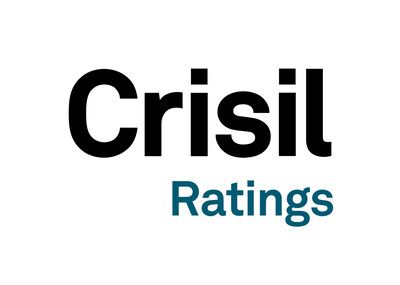By DR. JYOTI RANJAN SWAIN, CONSULTANT-SURGICAL ONCOLOGY, HCG PANDA CANCER HOSPITAL, CUTTACK
When planning a pregnancy, it is essential to take proactive steps to safeguard your health and fertility. One of the most important, yet often overlooked, aspects of preparing for pregnancy is preventing cervical cancer. Cervical cancer is one of the most preventable cancers, and taking preventive measures before conception can significantly reduce your risk. Understanding the causes of cervical cancer, the ways to prevent it, and how these steps align with your reproductive health is crucial for ensuring both a healthy pregnancy and long-term well-being.
Understanding Cervical Cancer and Its Causes
Cervical cancer begins in the cells of the cervix, the lower part of the uterus that connects to the vagina. The primary cause of cervical cancer is persistent infection with high-risk strains of the human papillomavirus (HPV), a common sexually transmitted infection. While most HPV infections are cleared by the immune system, some can cause abnormal changes in cervical cells, potentially leading to cancer. However, cervical cancer is largely preventable with the right strategies.
Preventive Steps to Take Before Pregnancy
Regular Screening (Pap Smears and HPV Testing)
Routine screening for cervical cancer is one of the most effective ways to prevent it. A Pap smear detects abnormal cells in the cervix, while an HPV test identifies the virus responsible for these changes. By identifying and treating abnormal cells early, cervical cancer can often be avoided.
When to Start Screening: The American College of Obstetricians and Gynaecologists (ACOG) recommends that women begin cervical cancer screening at age 21. Screenings should continue every three years with a Pap smear until age 30. After age 30, a combination of a Pap smear and an HPV test is recommended every five years.
Why It Matters: Regular screenings help detect abnormalities early, allowing for timely treatment before cancer develops. If you’re planning a pregnancy, ensure you have a screening before conception to maintain a healthy cervix.
HPV Vaccination
One of the most effective ways to prevent cervical cancer is by protecting yourself from HPV infection. The HPV vaccine, which is recommended for girls and boys at ages 11-12, helps prevent infection from high-risk strains of HPV responsible for cervical cancer.
Before Pregnancy: If you are planning a pregnancy and have not yet received the HPV vaccine, consult your healthcare provider. The vaccine is most effective when given before exposure to the virus, but women up to age 45 who have not been exposed to the strains covered by the vaccine can still benefit.
Why It’s Important: The HPV vaccine can protect against the types of HPV that cause approximately 70% of cervical cancer cases. Vaccination before pregnancy can significantly lower your risk of developing cervical cancer later in life.
Safe Sexual Practices
Since HPV is primarily transmitted through sexual contact, practicing safe sex is an important step in reducing your risk of infection. While condoms do not provide complete protection against HPV, they can lower the likelihood of transmission. If you’re planning a pregnancy, it’s a good idea to discuss safe sexual practices with your partner and be mindful of the risks associated with HPV transmission. While HPV is common, reducing exposure is key to preventing the infection and subsequent development of cervical cancer.
Healthy Lifestyle Choices to Lower Cervical Cancer Risk
Adopting a healthy lifestyle can further reduce the risk of cervical cancer and improve overall reproductive health. Key factors include:
Smoking Cessation
Smoking weakens the immune system, making it harder for the body to clear HPV infections. Women who smoke are at a higher risk of developing cervical cancer compared to non-smokers. If you smoke, quitting before trying to conceive is essential. Stopping smoking not only reduces your cervical cancer risk but also improves your overall health and increases your chances of a healthy pregnancy.
Balanced Diet and Regular Exercise
Eating a healthy diet rich in fruits, vegetables, and whole grains, combined with regular exercise, can help strengthen your immune system and maintain overall health. Studies suggest that a healthy lifestyle may help reduce the risk of various cancers, including cervical cancer. Maintaining a healthy weight and staying physically active can support your immune system’s ability to fight infections like HPV and improve your overall health as you prepare for pregnancy.
Managing Stress and Health Conditions
Chronic stress and certain health conditions, such as HIV, can weaken the immune system, increasing the likelihood of developing cervical cancer. Managing stress and staying on top of any existing health conditions is crucial for maintaining a strong immune system.
Seeing An Expert for Evaluation
Before planning a pregnancy, it’s wise to consult with your gynaecologist to assess your risk for cervical cancer. A thorough evaluation may include:
Reviewing your medical and sexual history
Evaluating any previous Pap smear or HPV test results
Discussing the HPV vaccine if appropriate
Providing guidance on quitting smoking and making other lifestyle changes
If you have a family history of cervical cancer or have had previous HPV infections, your healthcare provider might recommend more frequent screenings or additional tests to ensure early detection of any abnormalities.
The Importance of Early Detection in Preventing Cervical Cancer
Early detection of abnormal cervical cells through regular screenings is key to preventing cervical cancer. If your screening results indicate abnormalities, early intervention can prevent these cells from turning cancerous. Procedures such as colposcopy (a closer examination of the cervix) or biopsy can determine if the changes are pre-cancerous and allow for timely treatment, which can prevent cancer from developing and protect your fertility in the long run.
Cervical cancer is largely preventable, and taking steps before pregnancy to reduce your risk can protect both your health and your fertility. Regular screenings, HPV vaccination, healthy lifestyle choices, and safe sexual practices all play a crucial role in preventing cervical cancer. By prioritizing these preventive measures, you are not only reducing your risk of cancer but also ensuring that you are in the best possible health as you plan for pregnancy. Always consult with your healthcare provider for personalized guidance on how to protect yourself from cervical cancer and prepare for a healthy pregnancy.



